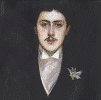Modern Languages and Literatures, Department of
Date of this Version
March 2006
Abstract
As a school of literature, Symbolism refers to three phases of a vital part of the development of literary modernism: first to an artistic movement in France and Belgium during the last decade and a half of the nineteenth century; then, retrospectively and most importantly, to its immediate sources in French poetry beginning in the 1850s; and finally to the influence that both of these had on European and American literatures throughout the first half of the twentieth century. The designation then, had its original and official application to the second and, it must be owned, from a literary point of view the least significant of these phases. The perceived failure of the Symbolist movement to generate major works drew attention to the writers from whom it drew inspiration, and so by the 1920s the especially suggestive term Symbolist had come to be associated primarily with the movement’s four great predecessors who remain among the most influential writers of the French tradition, not only with respect to France’s poetry but across national boundaries and genres. While the emphasis in this brief introduction will be predominantly literary, it must be pointed out, too, that the second phase, the Symbolist movement proper, played a vital cultural role and is an area where much original research is currently being conducted.
In its primary context, then, Symbolism refers to the four poets who preceded the Symbolist movement: Charles Baudelaire (1821–67), Stéphane Mallarmé (1842–98), Paul Verlaine (1844–96), and Arthur Rimbaud (1854–91). They are aiso the principal sources of influence on many of the writers outside of France who were drawn to the new aesthetic tendency they helped define. Each in his own way was responsible for powerful innovation, having gathered up the principal threads of the French poetic tradition since the sixteenth century along with German, British, and American contributions to Romanticism. Beyond the simple designation of an aesthetic tendency, Symbolism is a useful term as applied to the works of these poets in that it refers at once to an important feature of poetic content and to an attitude toward the figurative operation of literary language.


Comments
Published (as Chapter 14) in A Companion to Modernist Literature and Culture, edited by David Bradshaw and Kevin J. H. Dettmar. Malden, MA : Blackwell Publishing, 2006. Pages 155–162. Copyright © 2006 Blackwell Publishing Ltd. Used by permission.